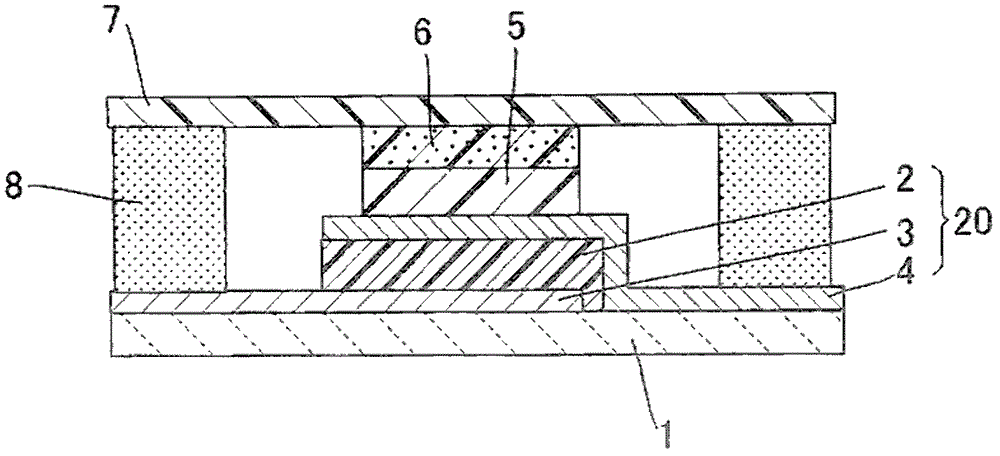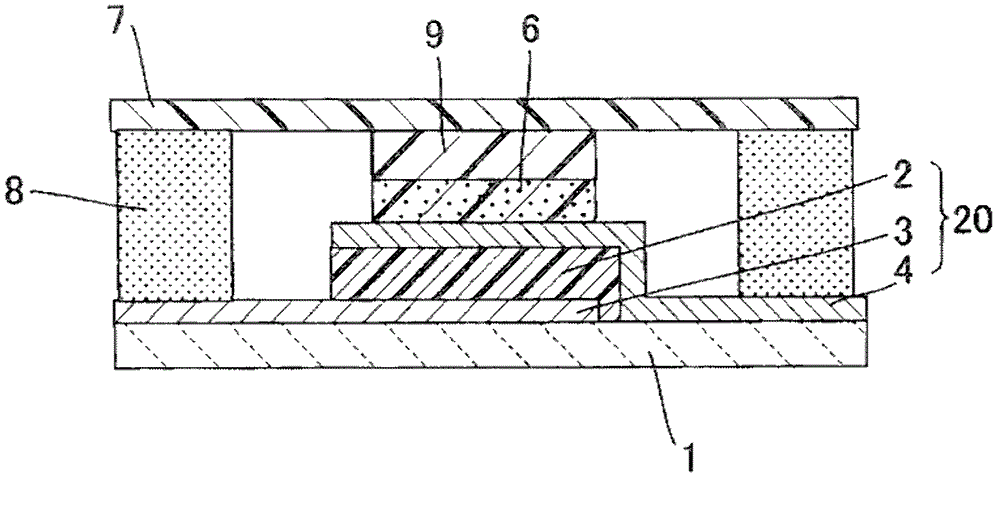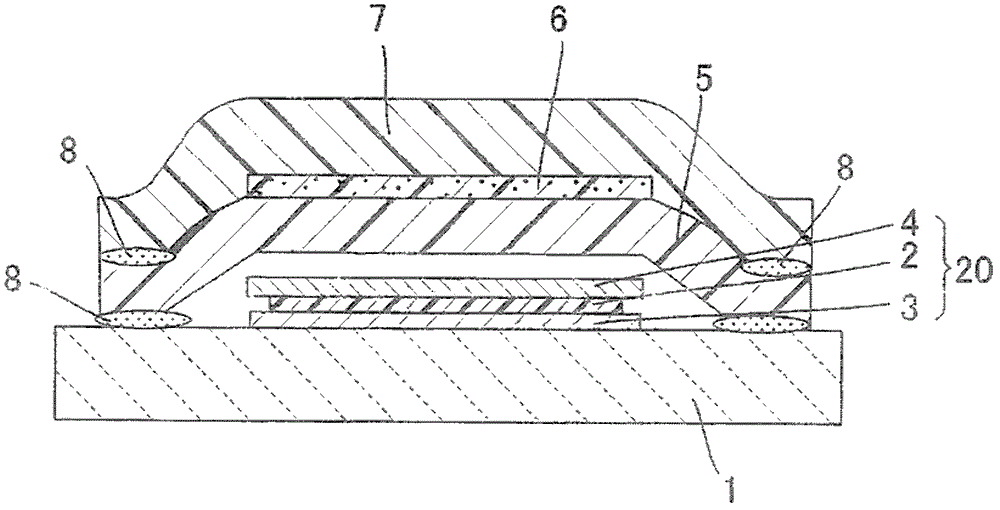Organic electronic device and method for manufacturing the same
A technology of organic electronic devices and manufacturing methods, applied in semiconductor/solid-state device manufacturing, electrical solid-state devices, electrical components, etc., can solve problems such as weak tolerance
- Summary
- Abstract
- Description
- Claims
- Application Information
AI Technical Summary
Problems solved by technology
Method used
Image
Examples
Embodiment approach 1
[0089] An example of the organic electronic device of the present invention is figure 1 As shown, an organic semiconductor element (B) 20, a layer (C) 6 containing a scavenger that absorbs at least one of moisture and oxygen, and a gas barrier film (D) 7 are laminated in this order. The organic semiconductor element (B) 20 has at least a pair of electrodes 3, 4 and an organic semiconductor layer 2. The gas barrier film (D) 7 covers the organic semiconductor element 20, wherein at least one of the electrodes is There is at least one anticorrosion layer (E) 5 between the layers (C) 6 of the scavenger absorbing at least one of moisture and oxygen. Among them, the organic semiconductor element (B) 20 may be formed on the substrate (A) 1, and the gas barrier film (D) may also be used as the substrate. Among them, the organic semiconductor element (B) has the following structure: the organic semiconductor layer 2 is provided between the transparent electrode 3 and the metal electrode...
Embodiment approach 2
[0096] In addition, an example of the organic electronic device of the present invention is image 3 and Figure 4 As shown, at least a substrate (A) 1, an organic semiconductor element (B) 20, a layer (C) 6 containing a scavenger that absorbs moisture and / or oxygen, and a gas barrier film (D) 7 are laminated in this order, wherein , There is a resin layer (F) between the organic semiconductor element (B) and the layer (C) 6 containing a scavenger that absorbs at least one of moisture and oxygen, so that the organic semiconductor element (B) ) Is not in direct contact with the layer (C) 6, and the substrate (A) 1 and the gas barrier film (D) 7 are directly bonded or bonded via an intermediate layer such as an anti-corrosion layer (E) 5, So that the organic semiconductor element (B) and the layer (C) 6 are not in contact with external air,
[0097] Furthermore, the film thickness of the resin layer (F) is 20 μm or more,
[0098] The resin layer (F) and the gas barrier film (D) sati...
Embodiment approach 3
[0104] In addition, an example of the organic electronic device of the present invention is Figure 5 As shown, a layer (C) 6 containing a trapping agent is formed on a gas barrier film (D) 7 on which a gas barrier layer such as a back protective sheet not shown in the figure is formed, and a layer (C) 6 composed of a corrosion protection layer (E) 5 is provided The resin layer (F) is made to cover the capture agent-containing layer (C) 6, and the resin layer (F) is bonded to the gas barrier film (D) 7 via the sealing material 8 to make the resin layer (F ) Not in contact with the end surface of the organic electronic device and not exposed to the outside. The other parts are the same as in the second embodiment described above.
PUM
 Login to View More
Login to View More Abstract
Description
Claims
Application Information
 Login to View More
Login to View More - R&D
- Intellectual Property
- Life Sciences
- Materials
- Tech Scout
- Unparalleled Data Quality
- Higher Quality Content
- 60% Fewer Hallucinations
Browse by: Latest US Patents, China's latest patents, Technical Efficacy Thesaurus, Application Domain, Technology Topic, Popular Technical Reports.
© 2025 PatSnap. All rights reserved.Legal|Privacy policy|Modern Slavery Act Transparency Statement|Sitemap|About US| Contact US: help@patsnap.com



